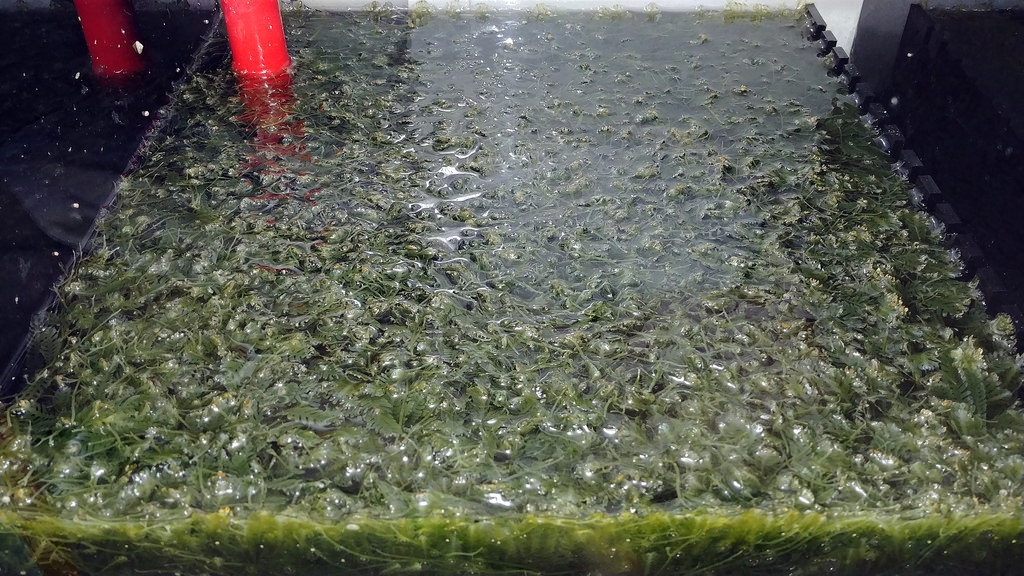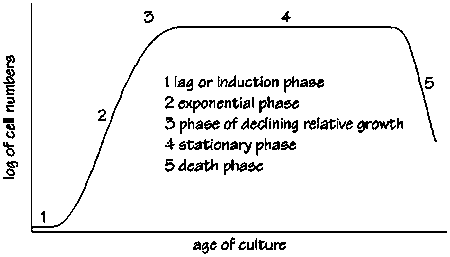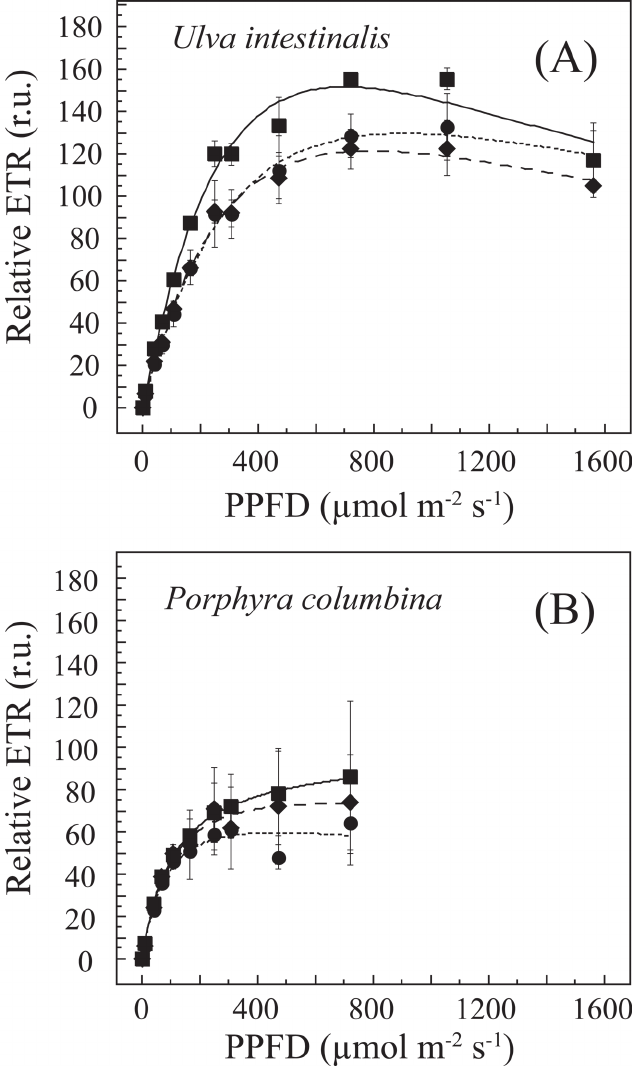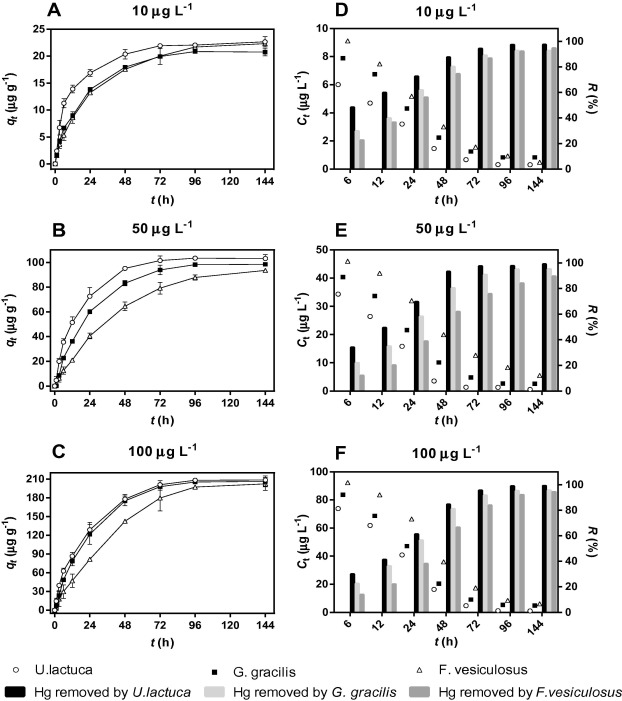That's beautiful, I'm about halfway thereWhen I first started the refugium, I was just letting it grow out because I had lots of open space. After about six months, I started removing a substantial amount to "export" the nutrients. After a few months of doing this, nitrate and phosphate levels started to creep up so I decided to leave it alone again. For the past two or three months I haven't messed with it and levels have come down again. Anecdotally, this seems to suggest it is best for me to leave it alone and just let it do whatever it is doing down there. I haven't removed any and it is so dense it's hard to know what is going on down there.

Navigation
Install the app
How to install the app on iOS
Follow along with the video below to see how to install our site as a web app on your home screen.
Note: This feature may not be available in some browsers.
More options
You are using an out of date browser. It may not display this or other websites correctly.
You should upgrade or use an alternative browser.
You should upgrade or use an alternative browser.
Macro Nutrient Uptake
- Thread starter jduong916
- Start date
- Tagged users None
If you have a huge ball of macro and it stops growing, why trim. Hasn't it done what you want. It's removed enough N and P that it can't grow anymore; great why cut it. The smaller biomass is not going to remove any additional N and P until the level rises which the hobbyist is encouraging by removing the macro in the first place. Don't remove the macro and the levels shouldn't rise.
The whole thing about "export" by removing is a little confusing. The nutrients are already exported in the macro, unless it starts to fully decompose its not going to enter back into the system. If you have a huge ball of living macro thats not growing and not dying I see no need to remove it. The nutrients are still exported into the macro.
The whole thing about "export" by removing is a little confusing. The nutrients are already exported in the macro, unless it starts to fully decompose its not going to enter back into the system. If you have a huge ball of living macro thats not growing and not dying I see no need to remove it. The nutrients are still exported into the macro.
Last edited:
- Joined
- Oct 1, 2017
- Messages
- 95
- Reaction score
- 33
thats the problem i'm having my macro is removing all sorts of nutrients but growing very slow. I bought my macro in july the size of a baseball and now is the size of a softball i'm not touching it cause my levels are right where i want them and i guess eventually it'll grow the size of my fug.
Randy Holmes-Farley
Reef Chemist
View Badges
Staff member
Super Moderator
Excellence Award
Expert Contributor
Article Contributor
R2R Research
My Tank Thread
- Joined
- Sep 5, 2014
- Messages
- 67,283
- Reaction score
- 63,632
The whole thing about "export" by removing is a little confusing. The nutrients are already exported in the macro, unless it starts to fully decompose its not going to enter back into the system. If you have a huge ball of living macro thats not growing and not dying I see no need to remove it. The nutrients are still exported into the macro.
I agree.
Physical space might be a be a factor. Given the physical space limitations, the right lighting and a steady supply of nutrients space to grow will be the limiting factor.
If you have undetectable nutrients then it doesn't matter but if nutrients start to rise and there is no space to grow You have lost the efficiency.
I grew out a ball the size of a fist into a 5 gallon bucket full in 5 weeks, but the levels were undetectable by wk 3 yet it still grew in and filled the space so knowing that, I keep harvesting a little
I am not concerned with stunting it by removing too much as the Kessil grow light seems to have made removing too much a non-issue....
The more I remove the more it grows yet levels stay near zero.
The benifits so far is my fish are enjoying much more heavy feedings and I can dose reef energy and neither seem to be producing nuisance algae....except on the bottom where the Kessil grow light shines through the glass...
If you have undetectable nutrients then it doesn't matter but if nutrients start to rise and there is no space to grow You have lost the efficiency.
I grew out a ball the size of a fist into a 5 gallon bucket full in 5 weeks, but the levels were undetectable by wk 3 yet it still grew in and filled the space so knowing that, I keep harvesting a little
I am not concerned with stunting it by removing too much as the Kessil grow light seems to have made removing too much a non-issue....
The more I remove the more it grows yet levels stay near zero.
The benifits so far is my fish are enjoying much more heavy feedings and I can dose reef energy and neither seem to be producing nuisance algae....except on the bottom where the Kessil grow light shines through the glass...
I have very low N and P levels but I do have to clean the glass every 2 days. It's weird because I dont have algae problems anywhere else. The rocks and bottom stay pretty clean. Just the glass gets algae. I think it's because I have pretty strong lighting in the display.
Last edited:
- Joined
- Sep 21, 2016
- Messages
- 101
- Reaction score
- 76
In an unlimited environment, algae growth is constant (e.g. X% daily increment, or put another way mass of new growth/mass of existing mass / time). The result is exponential growth (on an absolute basis), represented by: exp(specific growth rate*time). Respiration increases similarly.When macro gets big and stops growing is it still taking up nutrients? Or does it only take up nutrients when it growing?
Resource limitation slowly accumulates (Leibergs(sp?) law of the minimum, for reference) and the rate of growth eventually slows to approximately the rate of respiration. The last stage (5 in the below figure) shows a crash when the algae are so starved for resources that maintenance is no longer possible.

The key is to export at the inflection point of exponential growth (2) where resource limitation begins to occur (and thus slow net mass production). I can only tell you from "feel" that that point usually occurs after the volume of my sump has algae from the top to the bottom, but before the algae begins to pack densely in the volume. In my case, I have nutrients galore but algae eventually self-shades in the sump.
And just to demonstrate that the theory holds water (pun intended), a few examples:


The first image shows max growth rates, as a function of light availability (PPFD is analogous to PAR). The second, on the left column, shows growth rate as a function of time.
edit: This growth curve is mirrored in bacterial cultures, microalgae, macroalgae, individual trees, etc
Last edited:
I apologize if this was answered above and I'm hoping it's not too off topic but I don't speak the same scientific and biological language that some of you guys do LOL. I'm curious if macroalgae like chaetomorpha messes with oxygen and carbon dioxide levels the way a houseplant does?
OK, let’s clarify.
Nutrient export doesn’t occur until the biomass leaves the system through physical removal. The macro binds the nutrients, but said nutrients still remain in the system in the form of macronutrient biomass. If the plant dies, or is consumed by one of the tank’s inhabitants, the nutrients return to the system to potentially be used by other organisms. The alga still absorbs nutrients at present mass, but that absorpive ability is dramatically reduced from active growth rates when the organism is adding biomass. In fact, it’s easy to over shoot the uptake capacity of a current mass over time through consistent energy input through systemic feedings. In other words, you could end up back in the same place with elevated P and N either way.
I suspect what’s happening when you harvest is that you kick up a lot of nutrients from your refugium and detritus that’s trapped in the macro itself. Chaetomorpha is really good at trapping all kinds of junk in it, esp if channeling occurs or the flow is restricted by the mass of the organism. When you remove a portion of the macro biomass you inherently change the flow dynamics going through the refugium, providing a conduit for these nutrients to make it back into the main system (the reason why P and N rise appreciably in the bulk water). Since a primary filter of these two components has now been reduced by 50%, or more their elimination takes additional time so they may rise to testable levels until the macro acheives sufficient biomass to absorb them back to acceptable levels by adding additional mass through ‘growing into the job’.
So, I agree with the previous post. Harvest less, but more frequently, as to reduce alterations to the flow patterns moving through the refugium.
DJ
Nutrient export doesn’t occur until the biomass leaves the system through physical removal. The macro binds the nutrients, but said nutrients still remain in the system in the form of macronutrient biomass. If the plant dies, or is consumed by one of the tank’s inhabitants, the nutrients return to the system to potentially be used by other organisms. The alga still absorbs nutrients at present mass, but that absorpive ability is dramatically reduced from active growth rates when the organism is adding biomass. In fact, it’s easy to over shoot the uptake capacity of a current mass over time through consistent energy input through systemic feedings. In other words, you could end up back in the same place with elevated P and N either way.
I suspect what’s happening when you harvest is that you kick up a lot of nutrients from your refugium and detritus that’s trapped in the macro itself. Chaetomorpha is really good at trapping all kinds of junk in it, esp if channeling occurs or the flow is restricted by the mass of the organism. When you remove a portion of the macro biomass you inherently change the flow dynamics going through the refugium, providing a conduit for these nutrients to make it back into the main system (the reason why P and N rise appreciably in the bulk water). Since a primary filter of these two components has now been reduced by 50%, or more their elimination takes additional time so they may rise to testable levels until the macro acheives sufficient biomass to absorb them back to acceptable levels by adding additional mass through ‘growing into the job’.
So, I agree with the previous post. Harvest less, but more frequently, as to reduce alterations to the flow patterns moving through the refugium.
DJ
These answers are getting a bit complex. My macro isn't growing much now and it occupies about 2/3 of my sump chamber, not full and dense as suggested above. For the last two weeks I have been getting zero N and P with all my test kits. I still get algae on the glass every 2 days, but no where else. In the first graph above I would think this is when the line levels out and the macro is just doing what it does. Now I don't think the macro will all of a sudden die at once like the graph indicates. Wouldn't it just die enough to where the level of N and P would be sufficient for the smaller Macro to live or once again start growin?
I'm just going to let the macro ride and do its thing. I'm still a little shocked as I've never had undectable N and P for this long. I dont really trust the test kits 100%, I have to clean the glass often so I'm sure there is something in the water.
I'm just going to let the macro ride and do its thing. I'm still a little shocked as I've never had undectable N and P for this long. I dont really trust the test kits 100%, I have to clean the glass often so I'm sure there is something in the water.
Last edited:
Mine doesn't seem to grow at all. I may need more in the first place thinking I do not have any to spare in there.
Mine only takes up about25% of the fuge space.
Randy Holmes-Farley
Reef Chemist
View Badges
Staff member
Super Moderator
Excellence Award
Expert Contributor
Article Contributor
R2R Research
My Tank Thread
- Joined
- Sep 5, 2014
- Messages
- 67,283
- Reaction score
- 63,632
I apologize if this was answered above and I'm hoping it's not too off topic but I don't speak the same scientific and biological language that some of you guys do LOL. I'm curious if macroalgae like chaetomorpha messes with oxygen and carbon dioxide levels the way a houseplant does?
Yes. All photosynthetic organisms in a reef tank will consume CO2 (raising pH) and produce O2 when photosynthesizing.
Last year I had a large colony and just removed 90% of it.
The colony had not been growing much under a Kessil A150 anyway. It had taken well over a year to achieve its size that many can grow in weeks.
Even though it had not been growing....removing most of it correlated with a large spike in N and P and an increase in nuisance algae.
This lead me to believe even a non growing patch is consuming a fair amount of nutrients just to sustain itself.....in the same way I am blessed with being able to consume a boat load of pizza and not gain a pound.
That became academic when I upgraded to Kessil grow lights of course because it grows very fast now.
Wait till your 55 and watch that weight gain
Randy Holmes-Farley
Reef Chemist
View Badges
Staff member
Super Moderator
Excellence Award
Expert Contributor
Article Contributor
R2R Research
My Tank Thread
- Joined
- Sep 5, 2014
- Messages
- 67,283
- Reaction score
- 63,632
These answers are getting a bit complex. My macro isn't growing much now and it occupies about 2/3 of my sump chamber, not full and dense as suggested above. .
It can be a complex situation on why something isn't apparently growing.
Macroalgae need ALL of a source of N, P, CO2, a variety of trace elements such as iron, light, water flow, space, freedom from excessive predation, toxins, etc.
Randy Holmes-Farley
Reef Chemist
View Badges
Staff member
Super Moderator
Excellence Award
Expert Contributor
Article Contributor
R2R Research
My Tank Thread
- Joined
- Sep 5, 2014
- Messages
- 67,283
- Reaction score
- 63,632
OK, let’s clarify.
Nutrient export doesn’t occur until the biomass leaves the system through physical removal.
I'm not sure why we are debating a purely semantic point, but of course, if you define export to mean removal from the entire reef ecosystem, that is true. If you define it as being removed from the water column, then it is not.
- Joined
- Sep 21, 2016
- Messages
- 101
- Reaction score
- 76
Sorry if I was losing you but it sounds like you got the gist: 1) larger macroalgae accumulates more mass/removes more nutrients than smaller macroalgae; 2) At some point, the growth rate stalls by resource limitation whether N, P, space, light, whatever. Don't worry about that crash, that crash is more likely in places like a petri dish with no continual inputs of resources.These answers are getting a bit complex. My macro isn't growing much now and it occupies about 2/3 of my sump chamber, not full and dense as suggested above. For the last two weeks I have been getting zero N and P with all my test kits. I still get algae on the glass every 2 days, but no where else. In the first graph above I would think this is when the line levels out and the macro is just doing what it does. Now I don't think the macro will all of a sudden die at once like the graph indicates. Wouldn't it just die enough to where the level of N and P would be sufficient for the smaller Macro to live or once again start growin?
To rephrase those points, the management takeaway is: 1) Letting your algae grow will ensure that nutrients are sequestered at a faster rate; 2) It is optimal to export nutrients by culling algae once you have noticed the growth rate start to diminish.
I mean, I could have told you those two points and they sounds like no brainers, but if you're like me, I want to know why.
Sorry if I was losing you but it sounds like you got the gist: 1) larger macroalgae accumulates more mass/removes more nutrients than smaller macroalgae; 2) At some point, the growth rate stalls by resource limitation whether N, P, space, light, whatever. Don't worry about that crash, that crash is more likely in places like a petri dish with no continual inputs of resources.
To rephrase those points, the management takeaway is: 1) Letting your algae grow will ensure that nutrients are sequestered at a faster rate; 2) It is optimal to export nutrients by culling algae once you have noticed the growth rate start to diminish.
I mean, I could have told you those two points and they sounds like no brainers, but if you're like me, I want to know why.
I get what you're saying. I guess i'm in the good zone for now, that plateau line on the first graph. The crash does makes sense with the macro in a petri dish. I'm hoping my fuge stays like this and I'll start to worry about it if I have no additional room in the fuge or I really start seeing the macro die off.
I enjoy knowing why, but knowing why in layman's terms
I'm not sure why we are debating a purely semantic point, but of course, if you define export to mean removal from the entire reef ecosystem, that is true. If you define it as being removed from the water column, then it is not.
What he said.
Similar threads
- Replies
- 45
- Views
- 2,546
- Replies
- 3
- Views
- 206
- Replies
- 8
- Views
- 339
New Posts
-
-
-
-
Vario s-6 suddenly making loud humming noise
- Latest: Victor Guyton

















